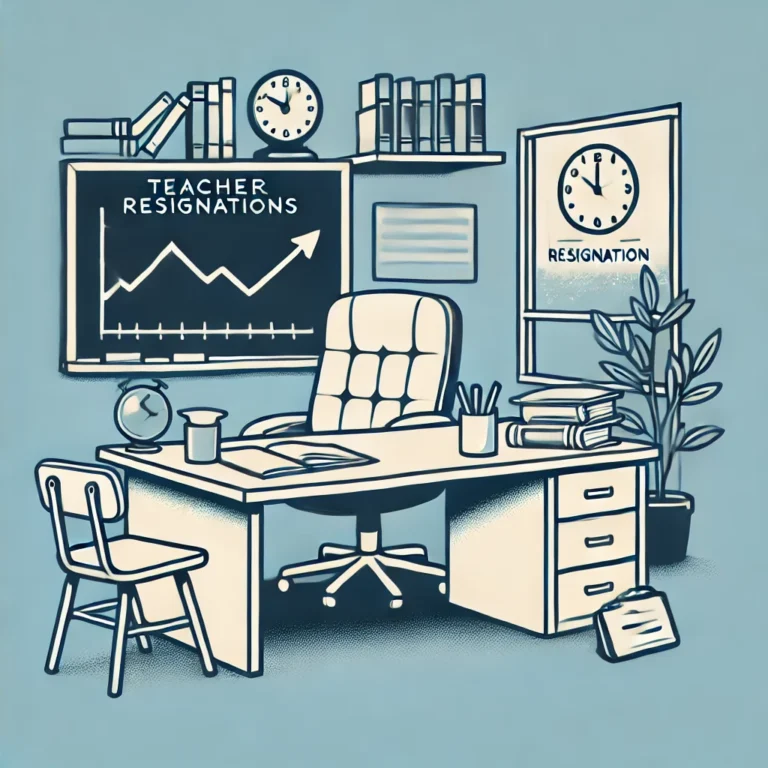In recent years, the United States has witnessed a significant increase in teacher resignations. As the backbone of the education system, teachers are essential to shaping the future of the nation. However, many are choosing to leave the profession, citing various reasons. In this blog post, we will explore the reasons behind these resignations, their impact on the education system, and potential solutions to this growing issue.
Causes of Teacher Resignations
Several factors contribute to the increasing number of teachers resigning from their positions in the United States. Here are some of the primary reasons:
-
Low Salaries and Economic Challenges: Despite the critical role they play in society, many teachers in the U.S. receive salaries that do not keep pace with the rising cost of living. This economic strain is particularly severe in urban areas where housing and living expenses are high.
-
Professional Burnout: The demands of teaching, including long hours, large class sizes, and the pressure to meet standardized testing goals, contribute to high levels of stress and burnout among educators. This has led many to reconsider their career choices.
-
Lack of Support and Resources: Many teachers feel unsupported by their administrations and lack access to necessary resources. This includes outdated textbooks, insufficient classroom supplies, and inadequate funding for professional development.
-
Increasing Student Behavioral Issues: Teachers are reporting more frequent and severe behavioral issues among students. The lack of adequate support from school administrations to address these challenges is causing frustration and burnout.
-
Concerns Over Safety: The rise in school shootings and other safety concerns has also contributed to teacher resignations. Many educators do not feel safe in their work environments and are opting to leave the profession as a result.
Impact on the Education System
The increase in teacher resignations has significant consequences for the U.S. education system:
-
Teacher Shortages: With more teachers leaving the profession, schools across the country are facing severe shortages. This has led to larger class sizes and a greater reliance on substitute teachers, which can negatively impact the quality of education students receive.
-
Decreased Student Performance: Studies have shown that teacher turnover can lead to a decline in student performance. Consistency in teaching is crucial for student success, and frequent changes in teaching staff disrupt the learning process.
-
Increased Stress on Remaining Staff: As more teachers leave, those who remain are often asked to take on additional responsibilities, leading to further stress and potential burnout.
Possible Solutions to Teacher Resignations
Addressing the issue of teacher resignations requires a multifaceted approach. Some potential solutions include:
-
Improving Teacher Salaries: To retain talented educators, it is essential to offer competitive salaries that reflect the importance of their work. This could also include better benefits and retirement plans.
-
Providing Better Support and Resources: Schools need to ensure that teachers have access to the resources they need to succeed, including modern teaching materials, adequate classroom supplies, and opportunities for professional development.
-
Addressing Student Behavioral Issues: Schools should implement programs that address behavioral issues more effectively, providing teachers with the support they need to manage their classrooms successfully.
-
Enhancing School Safety: Creating safer school environments through better security measures and mental health support can help alleviate teachers’ concerns about safety.
-
Reducing Bureaucratic Pressure: Reducing the emphasis on standardized testing and allowing teachers more autonomy in their classrooms could help reduce stress and prevent burnout.
Conclusion
The rising trend of teacher resignations in the United States is a complex issue that requires immediate attention. By addressing the root causes of this problem, such as low salaries, burnout, and lack of support, it is possible to create a more sustainable and supportive environment for educators. This, in turn, will ensure that students receive the high-quality education they deserve, ultimately benefiting society as a whole.


